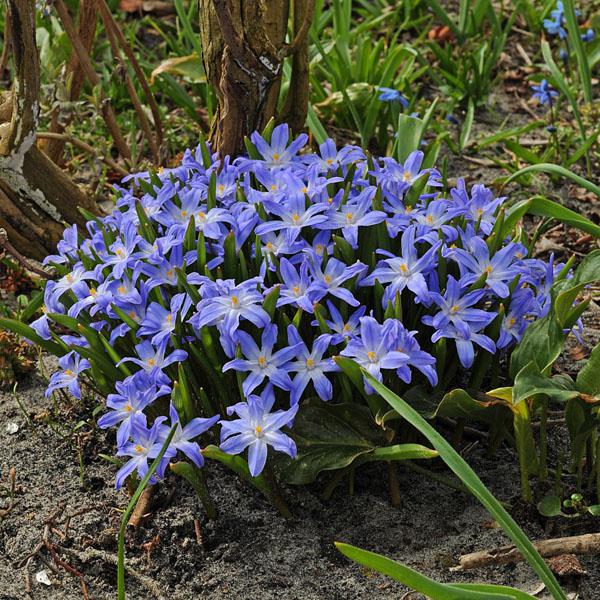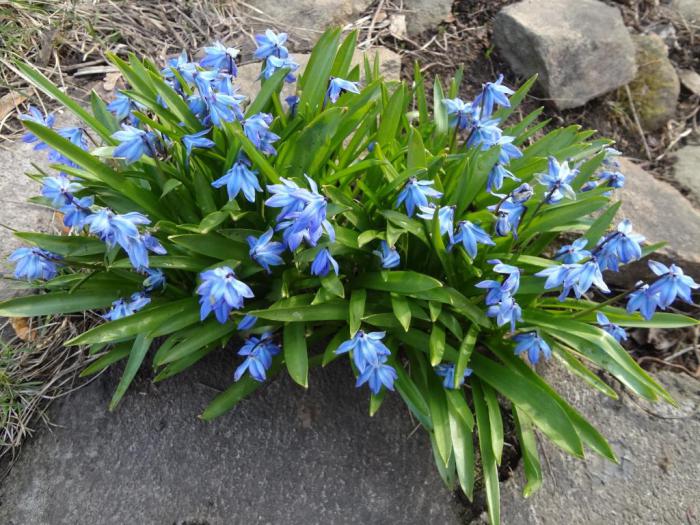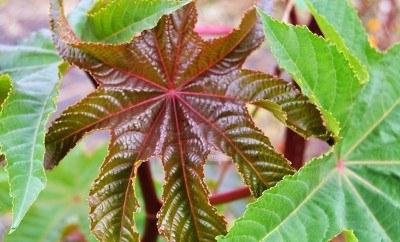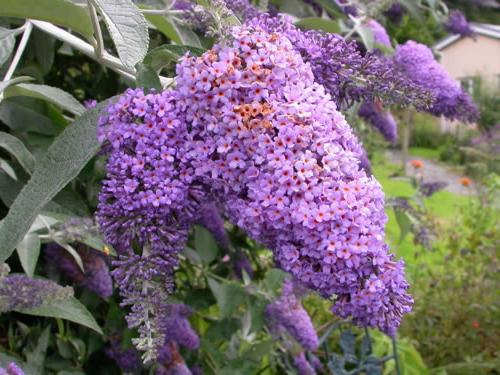Hionodox: planting and care (photo)
One of the most interesting ornamental plantsof all growing in the gardens of the central part of Russia, is the early-budding bulbous chionodox. Planting and caring for her - activities are not particularly difficult. However, in order to grow this wonderful bright flower, you need to know and follow some rules.
Description of the plant
In nature there are only six specieschionodox. All of them are found only in Asia Minor and Cyprus. Hyonodox is a low-growing plant with two radical leaves and very bright flowers, similar to bells. The most common colors are white, blue, blue and pink. Buds most often have a diameter of about 4 cm and consist of six interbedded petals. Chionodiox bulbs differ in egg-shaped and light color. In an adult plant, they can reach a length of 1.5-3 cm. Hoonodoxes bloom early in the spring and wither in the height of summer.

Reproduction
Propagates the henonodox (photo clearlyshow her grace and beauty) most often bulbs. In this case, the plant can blossom the next year. However, if desired, you can try to grow hyonodoxes from seeds. But with this method it will bloom only after 3-4 years. In one place this flower can grow without loss of decorative qualities for quite some time. Transshipment and seating should be done approximately once in five years. Very often these interesting flowers begin to spread around the site "independently." The fact is that their ants like to pull ants. However, in this case the flowers grow "wild."

Selecting a landing location
So, you decided to put on your owna plant such as a hionodox. Planting and caring for her - procedures that require the presence of certain knowledge and skills. First, you need to choose the right place under the bed. Hyonodoxes like sheltered from the wind and well-lit areas of the sun. In the shade, they can also grow, but the bloom will not be so abundant. Best of all, this beauty feels in wet areas. Very good look khonodoksy on the Alpine hills, flower beds, rosaries and even on lawns. Sometimes they are planted under the apple trees. The fact is that while the latter will release leaves that create a shadow, Hionodoxes already have time to flower.

Soil preparation
So, you now know where it will be betterall feel like a hionodox. Planting and caring for her will be successful only if the soil is properly prepared. In this respect, the hionodox is a rather whimsical plant. The soil must be very nutritious and friable. Under the bed, you have to arrange drainage. The fact is that if there is water on the flower bed, bulbs simply can easily rot. Drainage can be made from ordinary rubble. Its layer is covered with water-permeable dornite and covered with earth. In order to make the soil more loose, it can add a little sand. With regard to nutrition, soil quality is enhanced by the addition of humus. Of course, all the stones and roots of weed plants should be removed from the bed.
Planting material
Hionodox is a flower that gives order in one season2-4 bulbs. Dig them out on the planting in September-October. Leaflets should already start to turn yellow. The excavated planting material is stored in a cellar or basement at a temperature of +17 aboutC, in boxes under a layer of sand. Plant the bulbs in a week or two. You can plant them in the early spring. However, they will bloom in this case later.

How to plant
Before planting the soil should be loosened. Depth of embedding depends on the size of the bulbs. Usually it is about 6-8 cm. The distance between the holes is about 5 cm. After planting, the bed should be carefully covered with polyethylene. And if there are mice on the site, it is recommended to lay the lapnik on top of the film. This will prevent rodents from spoiling the bulbs. In early April, lapnik and film will need to be removed.
Care for Hionodox
Plant khonodoksa (photo varieties of differentcolors you can see on this page) does not differ from the special whims. However, of course, a flower bed with flowers will need to periodically weed and loosen (once a week). As for watering, it needs a lot of water. Soil under henonodoksami humidify once in two days. The first top dressing is done immediately after rostochki. Increase the nutritiousness of the soil under the plants, just scattering a thin layer of nitrogen fertilizer around the flower bed. Sometimes feeding is done even in the snow.

Hoonodox transplantation
Transplant Hionodox, as already mentioned,once in about 5 years. In this case, the bulbs should be digested at the end of July. You need to store them in the cellar. The klumba is cooked exactly the same way as for planting. Plant bulbs in the soil in mid-October.
Dyeing flowers
For beautiful flowers in wintertime is used for pasturing. Hionodox, like all bulbous, for this purpose is very good. Early in spring from healthy plants, bulbs are taken larger. Plant them in pots, deepening by 5-8 cm. The soil is prepared in the same way as when planting in the garden. The bulbs are buried 2-3 cm so that they are completely covered with soil. Soil from above slightly prininayut. Pots with planting material are buried in the shady place of the site. In November they must be moved to a cellar or cellar. Two months later, the containers are taken out and placed in a sunny place in a cool room. Leaves begin to develop in plants. After a while they will release peduncles. After henonodosy ottsvetut, watering is reduced. Further bulbs are excavated and transferred to the basement. They are stored in the same way as the usual planting material before landing in the ground.

Diseases of the plant
Pain and insect infectious flowers of the henonodoxRarely enough. However, sometimes such trouble happens. Usually they suffer from the same diseases as other bulbous ones. First of all, it's gray rot. Also, these flowers can be infected with bulbous rot or achelenchoides. The last disease is especially dangerous. Bulbs of infected plants become brown and begin to decay. At the bottom you can see light brown spots. In the section, however, annular rot is visible. The diseased plants considerably lag behind in development from healthy ones and practically do not bloom. Damaged bulbs must be destroyed. Healthy as a planting material can be used, however only after disinfection. To do this, they are treated with ordinary hot water (45 aboutFROM).
Types of Hoonodox
There are only five main varieties of this plant:
- Hionodox of lucily. This species comes from Asia Minor. Its name was given by the name of Lucille Boissier. It grows up to 20 cm tall. Leaflets in her grooved linear. On one plant there can be two or three. This species blooms in April, less often in May. Flowering lasts about 20 days. They breed lucilia in orchards and gardens for a long time - since 1764. Garden forms can be white or pink. White lucils in the inflorescence usually have 3-4 brushes and bloom for about two weeks. Pink is distinguished by a purple hue. Bulbs they have much more than white (up to 3.5 cm in diameter). The most famous brand of pink lucilia is Pink Pink.
- A gigantic hionodox. This species grows in the Alpine mountains. This is a small plant with an ovoid bulb. It is distinguished by narrowed up leaflets. The flower stem can reach 10 cm in height. In the inflorescence grows one to five flowers. The petals of this variety are distinguished by a purple hue. Giant this Hionodox is named for the size of the bud - 3.5-4 cm in diameter. This species will blossom before lucilia for several days. As a cultural plant it was planted in 1878.
- Hionodox of Mrs. Locke. This is a very beautiful plant with blue flowers. Buds are rather small - only 1-2 cm in diameter. Inflorescences often contain 2-4 flowers.
- Hinodox of Forbes. In nature it is found mainly only in Turkey, and then high in the mountains. In comparison with other varieties, it began to breed not so long ago - in 1976. The petals of the Forbes chemodox are blue with a white area around the eye. In height, this species can reach 25 cm. On the peduncle, an inflorescence of 15 flowers is formed. The dimensions of the latter reach 1-3.5 cm. The inflorescence looks very interesting, since its height is greater than the width. They meet the henonodoxes of this species with white and pink flowers. The main distinguishing features include the fact that it multiplies only by bulbs. In appearance, this species is very much like lucily.
- Hionodox is whitish. It is distinguished by white-pink inflorescences with a slightly lilac shade. The flowers of this species are also small - about one centimeter in diameter. In the inflorescence usually 1-3 buds, and in height it reaches 10-15 cm.

This is actually a very interesting plant -quinodox. Planting and caring for her - the procedures are not troublesome and even pleasant. In the event that you will do everything right, you will necessarily grow healthy, abundantly flowering beautiful plants.
</ p>>







